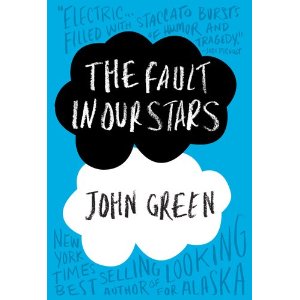 Cancer has become popular in today’s media from movies like The Bucket List to books like A Walk to Remember and My Sister’s Keeper. In fact, cancer as a topic in entertainment media has become popular to the point where it seemingly has become its own genre with its own stereotypes. Stories that deal with cancer are usually tearjerkers that are full of “cancer-patient wisdom”, as well as a message of living life with all you’ve got. With shows like The Big C and movies like 50/50, however, the entertainment industry has begun to try to find humor in tragedy, and in The Fault in Our Stars, John Green does just that, to the point where a reader may find him- or herself sobbing and laughing at the same time. Green manages to show that there is as much joy and laughter in a tragedy as there is hardship and heartbreak.
Cancer has become popular in today’s media from movies like The Bucket List to books like A Walk to Remember and My Sister’s Keeper. In fact, cancer as a topic in entertainment media has become popular to the point where it seemingly has become its own genre with its own stereotypes. Stories that deal with cancer are usually tearjerkers that are full of “cancer-patient wisdom”, as well as a message of living life with all you’ve got. With shows like The Big C and movies like 50/50, however, the entertainment industry has begun to try to find humor in tragedy, and in The Fault in Our Stars, John Green does just that, to the point where a reader may find him- or herself sobbing and laughing at the same time. Green manages to show that there is as much joy and laughter in a tragedy as there is hardship and heartbreak.
There is Hazel Grace Lancaster, a 16-year old-girl who nearly died at the age of 13 of thyroid cancer, but survives thanks to a (fictional) drug called Phalanxifor. As with many of John Green’s characters in his novels, Hazel is smart; her sarcasm and wit are what make her so likeable.
Then there is Augustus Waters, the sexy and clever 17-year old boy who is also severely ill, but has a good way of hiding it. It is seeing Augustus Waters at his sickest and weakest when one is truly drawn to him; with his tough exterior, cleverness and insight, readers’ hearts will break. It’s seeing characters in their sweetest and funniest moments, and their worst, their rock-bottom, their most painful moments, that makes this novel so heartrendingly real.
To call The Fault in Our Stars either a “cancer” or romance novel would not do it justice. In terms of age group, I wouldn’t even consider it a young adult novel. While it is a book about young adults, Green’s honest and witty writing, as well as his beautifully crafted phrasing, can attract any reader. It not only delves into the romance between these two teenagers, the tragedy they must face because of their illnesses, and the plans they achieve together through the Genie Foundation, but also asks the big, existential questions — ones that question the universe, the afterlife, and whether the universe really “just wants to be noticed” or not.
What makes the Green’s novel such a tearjerker is not the tragedy of cancer alone, but to see these characters being portrayed in such an honest and realistic way. They’re not “heroic sufferers.” They’re not “fountains of wisdom,” as John Green mentions in an Entertainment Weekly interview, but teenagers coming into terms with the fact that they’re living a “forever with numbered days.” Green allows his readers to enter into Hazel and Augustus’ “little infinity” and, by the end of the novel, wish that their infinity would never cease.
You will laugh, you will cry, and once you finish this book, you will wish it never ended.
It’s one of those books.
Rating: 5/5

I picked this book up on some one recommendation, After reading it first I thanked her. Some book defines emotions in such a simple way, that you feel the flow of it in yourself. Two people who are about to die, and yet they find love in each other. It might sound not so so cool, but when you read this book it will make you feel emotional about it.
Characters are very well written, pace of book never drops or never bores you.